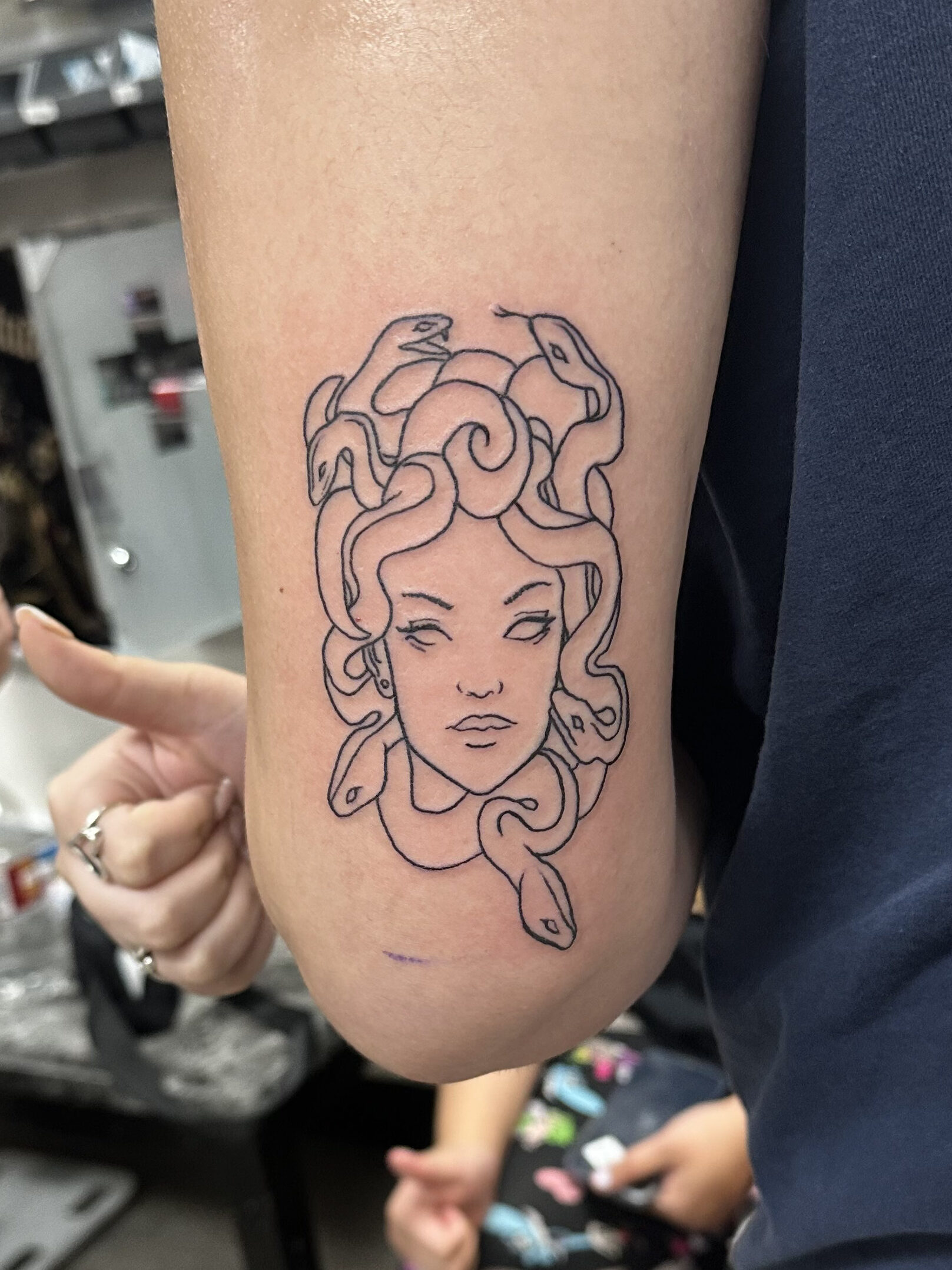Godlike figures lead lives that our more similar to ours than we realize. The story of Medusa is a complex but vital one to tell.

The Story of Medusa
Firstly, Medusa was originally one of the three Gorgon sisters, daughters of Phorcys and Ceto. Unlike her sisters, who were monstrous from birth, Medusa was a beautiful maiden known for her stunning hair. She served as a priestess in Athena’s temple, dedicated to a life of chastity.
Medusa’s life took a tragic turn when Poseidon, the god of the sea, took an interest in her. He unapologetically sexually assaulted her in Athena’s temple. There are two interpretations of what happened next. In the first version, Athena, enraged by this violation, punished Medusa instead of Poseidon, transforming her into a monster with snakes for hair and a gaze that turned anyone who looked at her to stone. Athena did this out of anger and jealousy. This punishment highlighted the cruel irony of victim-blaming in ancient myths. The second interpretation is that Athena turned Medusa’s head to snakes so to Medusa would always be protected and “cursed” her as an act of love and care. I personally believe that Athena is NOT a girl’s girl and that Medusa’s curse being a form of protection is just a positive by product that Athena didn’t care to think about because Athena assumed that the most important thing to Medusa was her looks.
After her transformation, Medusa was banished to a remote island, living in solitude and shunned by society. Her appearance was noted as terrifying, but beneath her monstrous exterior was a heartbroken woman who had been wronged. Regardless of the different versions of Athena’s reaction, Medusa still was the only one to suffer and blamed for the scenario.
Perseus
The hero Perseus was tasked with slaying Medusa as part of a quest to obtain her head for King Polydectes. Armed with gifts from the gods, including a reflective shield from Athena, Perseus approached Medusa’s lair. He used the shield to view her reflection and avoid her deadly gaze. After successfully beheading her, he took her head, which retained its petrifying power.
Medusa’s severed head became a powerful weapon for Perseus. He used it to defeat various foes, including the sea monster Cetus, and later gifted it to Athena, who placed it on her shield.
Doubling of Medusa
Medusa’s story has been interpreted in various ways, often symbolizing the themes of victimization, female rage, and empowerment. In modern retellings, she is frequently portrayed as a tragic figure who embodies the struggles faced by women, making her story resonate with contemporary audiences.
Her story, like many other survivors, has a doubled effect where she is both the victim and the villain. Most would describe Medusa as ugly or brutal while others, most of the time it’s survivors who know her story, will say that she is strong and resilient. She is caught between both narratives thus making her identity doubled.
TATTOO FACES

Because Medusa’s story represents triumph and resilience after experiencing rape, her head becomes a popular tattoo for survivors. The doubling of her identity is then cast on to survivors as they too are doubled with the same narrative.
I use the term ‘survivor’ instead of ‘victim’ when addressing people who have experiences with assault because of a few reasons: One, because in a lot of cases, people are often killed after being raped so to survive that experience is to be noted. Two, ‘victim’ gives us a weak-trauma narrative that we didn’t ask for and do not have to subjected ourselves to. And three, to have survived the experience and continuing to live with the aftermath isn’t just about living, it’s about SURVIVING.